Search engine marketing is a pillar of online marketing today — and understanding how it works is the key to digital success.
Here, you’ll find:
- The difference between SEM & SEO
- How changing Google algorithms affect SEM
- The essential elements of SEM on Google (and other search engines)
- Actionable tips for running a top-tier search engine marketing campaign
What is Search Engine Marketing?
Search engine marketing (SEM) is a form of digital marketing designed to increase your website’s visibility in the search engine results pages, or SERPs. It’s generally considered one side of the search engine coin and a counterpart to the organic methods of search engine optimization (SEO).
Let’s get back to basics and break down all the ins and outs of search engine marketing.
What’s the difference between SEO and SEM?
As mentioned above, SEO and SEM are both forms of marketing aimed at enhancing your site’s visibility on the SERPs, but they operate differently.
We consider SEO as a category under the SEM umbrella, since both involve search engines. The primary dividing factor is simple: money.
SEO is organic
An SEO strategy is understanding how a search engine analyzes and ranks websites. (Usually, “search engine” means Google, but of course there are others like Bing that are worth exploring.)
You then make changes to your website, publish new content, and generally improve your site to encourage the algorithms to increase your rankings. Instead of paying to rank, you’re investing time into web pages hoping they will perform well organically.
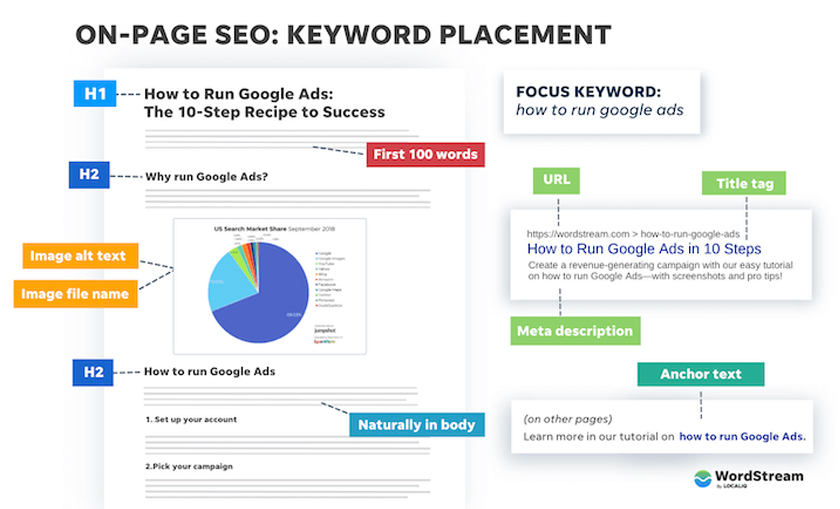
Image: Wordstream
Outside of SEO, SEM is paid
Search engine marketing strategies other than SEO are all about paid search marketing and pay-per-click (PPC). Paid ad campaigns are much faster to start with and see results, but they can be challenging to fine-tune, scale, and ensure that you’re making the biggest splash you can with your budget.
Even ranking #1 or #0 in the search results may not be enough to get your share of the incoming clicks because paid search advertising appears above the best organic results.

Thus, even when you’re already ranking highly for organic results, it often pays to put some money into your search ads to secure another result at the top.
The average Google search lasts less than a minute. People have an idea of what they want to find, browse the top few results, and click one that looks promising. If you’re ranking too far down the page, you won’t get more than a small share of those clicks.
With the prevalence of PPC ads and how ads take up positions above organic results, even a #1 organic result may not get as many clicks as the third-ranking ad on the page.
SEM also helps prevent traffic poaching. If a potential customer searches for your brand or product, the top organic result will be your website.
But what happens if a competitor pays for ads using that keyword? They may rank higher on the page via a PPC ad than for your brand name. This can use that position to poach potential website traffic from your audience. SEM can help minimize or even prevent this from happening.
How SEM works
SEM relies on the ad system that powers ads on your search results. The vast majority of the time, this means Google Ads.
Google Ads determine the ads that appear in Google Search and Google products like Google Shopping, Maps, and YouTube. However, SEM isn’t necessarily limited to just Google.
Any search engine that offers ads in its results has an ad system you can use. These ad networks can include other search engines like Bing Ads, social media ads, and also search engines like Amazon.
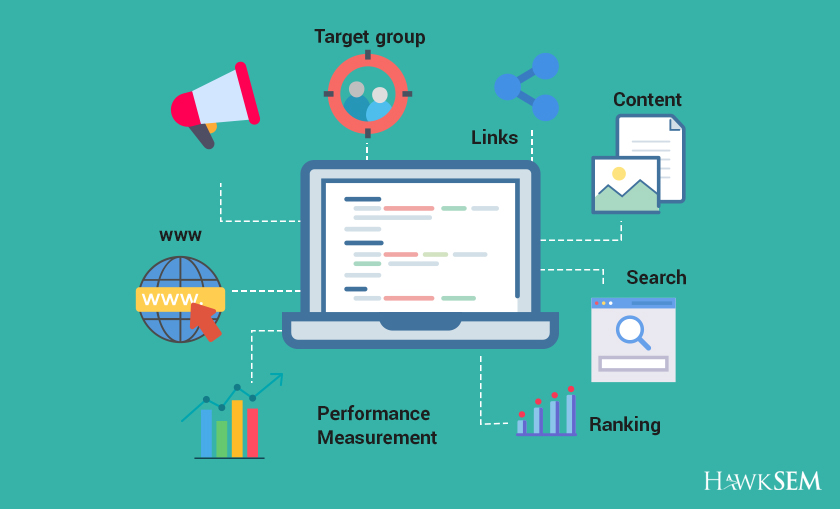
Mechanically, SEM works on a keyword basis. You perform keyword research, choose a keyword or a group of relevant keywords, a match type, and various parameters to expand or limit your ad’s audience. Whenever someone searches for a keyword that fits your parameters, Google runs an ad auction in the background.
Your bidding rules and budget limits determine how much you bid, and the auction results determine which people running ads get which positions for that query.
There’s a lot of nuance to this, including questions to ask like:
- Which keywords do you choose?
- What match types do you choose?
- What bids should you make?
- Which bidding and optimization types should you use?
- What additional targeting parameters should you use?
Learning all of this and tailoring it to each ad campaign is what SEM is all about.
The 6 keys to effective SEM
Effective SEM requires knowledge of several critical aspects of paid marketing. Let’s dive in.
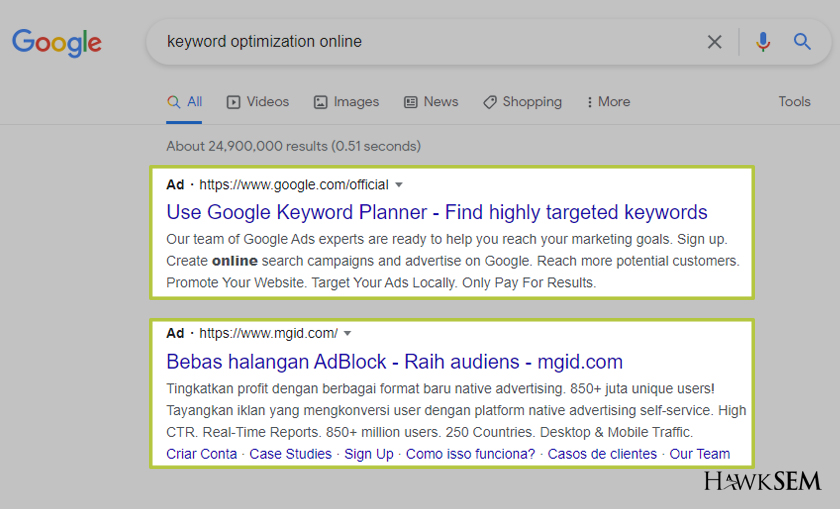
1. Campaign types
Google Ads has eight different campaign types.
Depending on your audience, industry, and goals, you may not need most of them for your digital marketing strategy.
- Search: Ads that display in your Google search results
- Display: These can appear in search results, on websites, and in Gmail
- Video: YouTube video ads
- Discover: Ads on YouTube post-videos, sidebars, and other locations, as well as the mobile Discover queue and Gmail ads
- App: These are mobile ads that appear in mobile SERPs, as well as Google Play, YouTube, Discover, and the display network
- Shopping: Ads that are displayed in Google Shopping and Gmail
- Local: These are visible on Google Maps, the display network, and YouTube
- Performance Max: This is a mixture of the above, with additional tools to manage it
Picking the right campaign type determines your ad’s performance. This includes what kind of copy you need to produce, what targeting can work best, and even where your audience is likely to come from.
2. Keywords
Keywords are the foundation of every ad. The keyword determines what kinds of queries the ad will display. The most important part of SEM is picking and analyzing the right keywords, bar none. Choosing the wrong search terms wastes money and leaves you with ineffective ads.
Keywords have various essential metrics (recorded and implied) that you must understand to use successfully. Recorded metrics include the CPA (cost per action) or CPC (cost per click) for the search query, the search volume, competition, and other metrics, depending on the tools you use. Implied metrics are things like search intent.
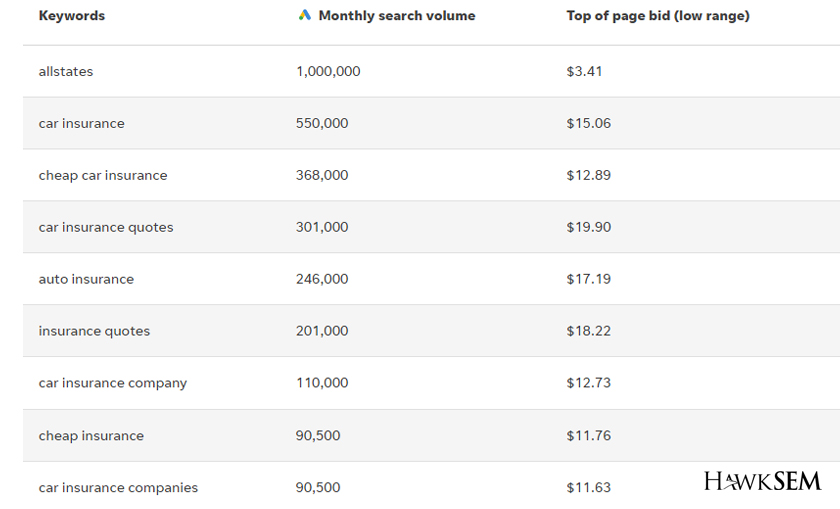
Search intent is paramount.
It’s not enough to know what a user is searching for. You need to understand why the user is searching for it.
Search intent allows you to provide ad copy that resonates with the searcher and encourages them to click on your ad over the others on display. A properly aligned and compelling ad in #3 will perform better than a less effective ad in #1.
3. Quality Score
Quality Score is an important metric for your Google Ads campaigns and keyword groups.
It’s a measurement and analysis of multiple factors, including:
- Your overall click-through rate or CTR (and the estimated click-through rate of ads you’re building)
- Keyword relevance to its ad group
- Landing page quality and relevance
- Ad text relevance
- Historic performance on your ads account
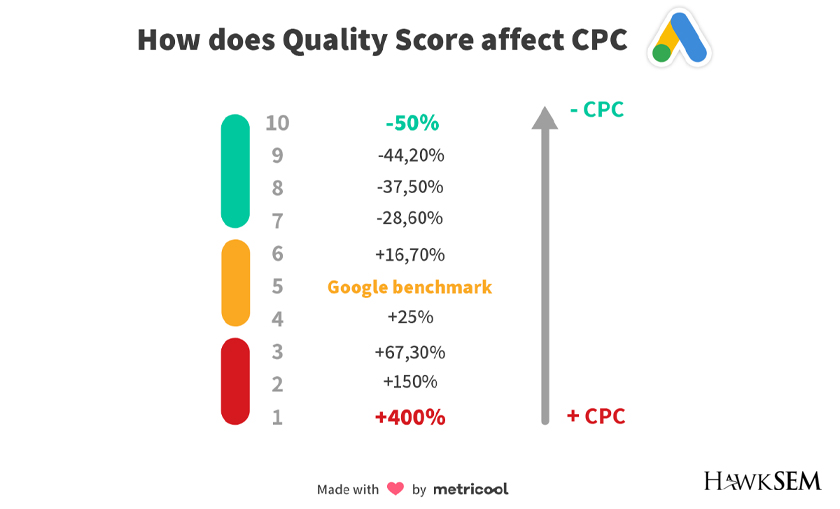
Combining this information, Google estimates how well-composed your ads are, their user experience and relevance, and how likely people are to click on them. Then, Google gives you a score based on that estimate.
This score itself does not directly impact your ad performance; instead, it reflects factors that do. Nevertheless, it’s critical to do what you can to maintain a good quality score.
4. Targeting
While keywords choose the broad audience you can reach with your ads, audience targeting options narrow that audience by focusing your ads on specific sub-sections of that group. Ad targeting on Google is among the most robust of any system short of Facebook, which isn’t relevant to SEM.

Choosing targeting options to narrow your ad audience helps improve your ad performance and relevance, resulting in better click rates, conversion rates, and a better quality score.
Targeting options include various audience segments and broad qualities shared by that group of people. These include lifestyle choices, habits, interests, life events, and others.
5. Ad elements
For SEM, each ad displayed looks more or less like an organic search result. The ad will have:
- A large and blue title operates as a headline to attract attention
- A display URL showing the user what domain they’ll eventually land on (this URL may be different from the actual URL and does not show tracking parameters and other data)
- A description, equivalent to a webpage’s meta description, as your general ad copy
Other ads may have images, videos, or ad extensions like a phone number attached to them as well. A considerable part of SEM is creating and testing various ad elements to find the most compelling way to reach your audience.

Every part of your ads can be tested and improved upon over time. A huge part of managing a successful marketing campaign is iterative testing and implementing improved designs. Tools like our own ConversionIQ can provide this insight.
6. Budget and Bidding
Google Ads offers a variety of bidding strategies, from manual control to automatic optimization.
Picking the right marketing strategy helps ensure you spend your budget in the most effective way possible. How much money should you put into it?
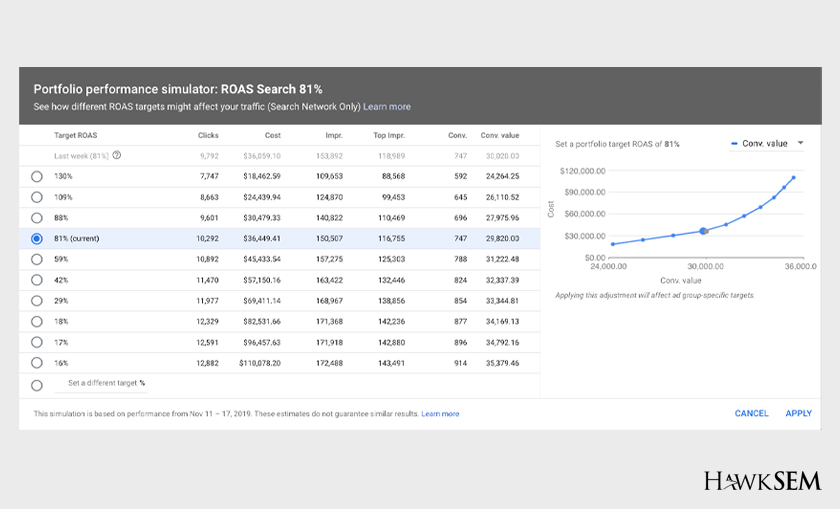
There’s no one-size-fits-all answer when it comes to SEM costs. According to Forbes, a ballpark estimate can range anywhere from $500 to $10,000 per month, depending on your needs and budget.
The brilliant part of SEM is that, when done effectively, every dollar invested results in more than a dollar’s worth of value to your company. Successful reinvestment allows you to expand your SEM budget to the point of equilibrium.
How to start a successful SEM campaign
SEM is complex and potentially expensive, but it’s a very doable task. You just need to lay the correct groundwork, take your time, and regularly test and monitor your ads.
Start by defining your objective. What’s the goal of your advertising? Do you want to build brand awareness, generate leads for your sales team, convert interested users into customers, promote a sale, or something else?
Knowing your objective allows you to refine your copy and target to reach the people most likely to complete that objective.

Next, start to define your targeting. Identify keywords that align with your objectives, with the right search intent behind them. Pick an effective match type and build a list of negative keywords to exclude. Choose targeting options and a bidding strategy to most effectively reach that audience for the least amount of money. Set budget caps to avoid running over.
Create your ad copy next. Your title, description, extensions, and URL are all critical as visible aspects of your ad. Depending on your display type and campaign type, you may also need to produce videos or images to accompany your copy. This copy can be tested and optimized over time using split testing and other tools.
Next, set up tracking. Google Analytics helps you track the performance of your ads, but additional tracking via custom goals and conversion actions, UTM parameters, and other attributes can also be relevant. Google even allows you to track phone calls, e-commerce sales, and in-store visits with the right conversion tracking setup.
Once this is configured and ready, you can submit it for approval, where it will go live once it is approved.
Once your ad is live, you can embark on a cycle of analyzing, optimizing, understanding, and improving your ads.
All the while, your organic techniques like SEO help boost other aspects of your marketing to encourage effective SEM.

The takeaway
We’ve said it before, but we’ll say it again: SEM is a constantly-evolving strategy. That means it requires ongoing work to do successfully. Market trends, interests, keywords, offers, and more affect SEM. It can’t be set and forgotten – you must run it on an ongoing basis if you want to see the best results.
If you’d rather keep your marketing in-house, you can use a wide range of professional tools to help you identify and optimize every aspect of SEM. Tools like Semrush, Wordstream, and SpyFu are all great.
If you don’t have the time, team or bandwidth to manage all the search engine marketing aspects on your own, the best thing to do is to contract a top-tier company to do it for you. As one of the industry-leading SEM companies, that’s what we do. If you’re interested, feel free to drop us a line.
You can also check out ConversionIQ, our enterprise-grade SEM improvement platform. It makes managing thousands of ads easy, with full-funnel attribution and powerful insights on your best and worst performers. If you’re interested, you can book a demo with us (or just say hello!) to see how we can improve your ROI, lead quality, and spending decisions.